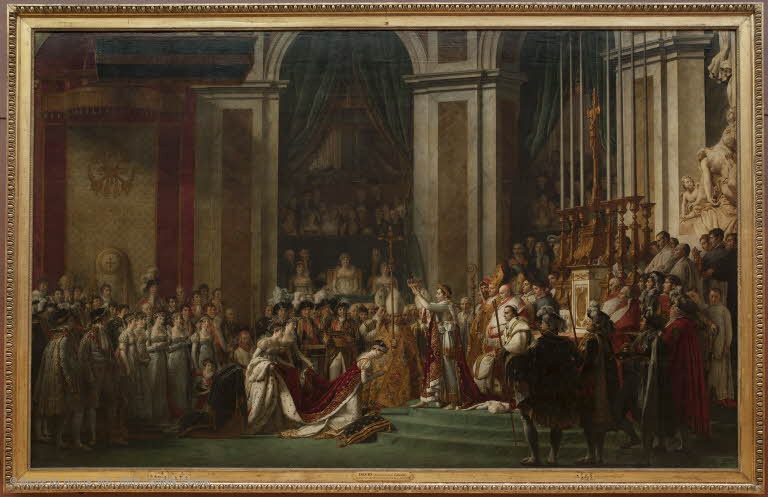18 April 2019
Saving France’s Heritage
A forgotten story, a forgotten hero.
By Richard Pooley
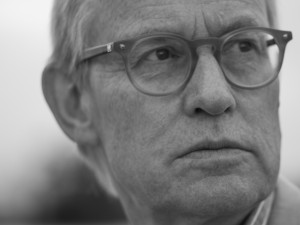
There wasn’t the usual levity when I walked into my French village’s southern boulangerie early on Tuesday morning. The queue was quiet, the mood sombre. We live 500 km south of Paris but the sudden destruction of the roof and spire of Notre Dame has shocked every villager I have met. “It is sad to see this part of us burn.” Well said, M Macron. Later that day, on the radio, I heard a French woman declare tearfully that “It is the burning of our history.”
I wasn’t surprised by the reaction. The cathedral of Notre Dame means more to the French than any other building. It is where France as a territory was born. The island on which it stands was for centuries at the heart of the relatively small area over which the kings of France held real power. Since 1768 all distances from Paris have been measured from a point in the square in front of the two western towers. The reports that firefighters acted swiftly and bravely to save many of the cathedral’s most precious objects, including its three superb rose windows and that the towers, stone vaults, walls and buttresses have all survived intact has fuelled optimism that the damage has not been as extensive as first feared. The French can be confident that it will be rebuilt, perhaps without too much cost to French taxpayers if promises of hundred of millions of euros continue to be made by France’s richest people and companies.
But it did make me think of another time when France’s heritage was in real danger. Not from fire but from bombs and thieves. The story and its central hero have been largely forgotten by the French, despite some recent books and films covering it and him. I can confirm this amnesia because the village where I live played a major role in the story and yet it appeared to be unknown to many of the two hundred modern-day villagers who crammed into our cinema to hear a lecture on it last month.
You may have seen the 2014 film The Monuments Men. George Clooney, Matt Damon, Cate Blanchett and others play art historians and museum staff who manage to save thousands of artworks stolen by the Nazis in World War Two. Hitler has ordered them to be destroyed should the Third Reich fall. One of the paintings is the Mona Lisa but brave George and Co manage to stop the Austrian salt mine in which she has been stashed from being blown in. It’s Hollywood tosh. There was a Monuments, Fine Arts, and Archives section of the Allied armies, set up in 1943 and led by American scholars. But the 350 men and women of the unit came from 13 countries and the idea had come from a small group of British officers doing similar work in Libya in 1942. Nor did they fight, although two, an American architect and a British academic, were killed. And the Mona Lisa never left France. There was a “Mona Lisa” among the 6,500 paintings recovered from the Austrian Altaussee salt mines but the Louvre in Paris state that it was a good 16th century copy of Da Vinci’s masterpiece, perhaps placed there as a decoy by the hero of the story I’m about to tell. If you want to know the truth about the MFAA, and it is a fascinating story, read Robert Edsel’s book Monuments Men: Allied Heroes, Nazi Thieves and the Greatest Treasure Hunt in History.
The story that most French don’t know about concerns the artwork of the Louvre during World War Two. Frankly, why it has not been made into a biographical film is beyond me. It has it all – duplicity, cunning, bravery, bad guys who look evil and behave monstrously, and a hero with the looks of Bogart who falls in love with a platinum blonde spy for whom he eventually leaves his wife. And a lot of the world’s greatest paintings and sculptures.

Jaques Jaujard is the hero. In 1938 this 43 year old Frenchman organised 70 trucks to take the art collection of Madrid’s Museo del Prado to Geneva to escape the depredations of the Spanish Civil War. On 29 August 1939, Jaujard, deputy head of the Louvre, closed the museum, ostensibly for repairs to be carried out. In fact, about two hundred staff, students from the Louvre’s art school and employees of the Louvre’s own department store spent three days removing, packing and loading on to 203 vehicles – trucks, ambulances, delivery vans and taxis – 3,690 paintings, plus sculptures (e.g. the 3-ton Winged Victory of Samothrace) and antiquities. Jaujard had been secretly planning this evacuation with the curator of paintings, René Huyghe, ever since the Nazis had annexed Austria in March. Neither man had any faith in the impregnability of the Maginot Line and they knew they had to get these national treasures as far away as possible from bombs and bullets. As well as not telling their boss or the relevant ministry of the plan (perhaps they were all on holiday; it was August after all), it’s not clear that the staff and volunteers knew what was going to happen to these works of art. Even those in the chateaux, abbeys and mansions across France who had agreed to take them did not know what they were going to be storing. The crates and cases were labelled with a code thought up by Jaujard and known only to him, Huyghe and a handful of trusted deputy curators. La Joconde, as the Mona Lisa is called in France, was in a small, velvet-lined crate marked in black “MN”. Jaujard later had “L.P.0” added in red. She, lucky girl, got to travel in an ambulance on a stretcher with elastic suspension.
Other paintings gave the movers greater headaches. Veronese’s Wedding Feast at Cana is 65m² and David’s The Crowning of Napoleon (in Notre Dame) is 60m². They were rolled up and put into 9 metre long tubes and hoisted on to a cattle truck. Géricault’s The Raft of Medusa was too fragile to be rolled up and had to be transported vertically. Jaujard requisitioned scenery trailers from the Comédie-Française for it and similarly large and fragile paintings. This worked well until the convoy reached Versailles. The 6.5 metre-high crates snapped the overhead power lines, cutting the town’s electricity supply. From then on a telephone van led the convoy, and men with long poles were deployed to raise the cables. Low bridges had to be avoided. And the convoy could not move when the wind was strong enough to blow over the sail-like crates.
Jaujard and his colleagues did not only have to keep the paintings from being destroyed by bombs or stolen by the enemy. They had to do their best to stop them being damaged by damp, wild variations in temperature or fire. The Mona Lisa was moved from the château of Chambord on the Loire to the château of Louvigny in November 1939. This time she was in an armoured van sealed shut to keep the humidity constant. The curator with her nearly suffocated. When the Germans invaded France in June 1940, most of the art works were taken south and ended up in the so-called Free Zone of the Vichy government under Pétain. The Mona Lisa found herself in the Abbey of Loc-Dieu but had to moved on in October 1940 because the abbey was too humid. She stayed at her next resting-place, the Ingres museum in Montauban, 55km north of Toulouse, until February 1943. She escaped damage from the flooded Tarn river in August 1942 thanks to the quick thinking of a young museum worker (though he did not know it because he didn’t know which crate she was in). By 1943 Jaujard was worried that she and all the other works in Montauban could be hit by allied bombs aiming for the bridge right next to the museum. So, she was moved to her final wartime home, the Château of Montal, 20 minutes drive from where I am writing this.
Jaujard spent most of the war in Paris. Having got the treasures of the Louvre away to relative safety, his main task was to keep the German victors, especially Goering, Goebbels and von Ribbentrop, from getting their hands on them and carrying them away to their private collections in Germany or to Hitler’s planned museum in Linz, Austria. In this he had help from an unlikely quarter. Hitler had appointed Count Franz Wolff-Metternich, descendant of the great Austrian diplomat, to oversee France’s art collection. This aristocrat, though a member of the Nazi party, loathed Hitler and his regime. Jaujard noted in his diary that Metternich seemed relieved to find the Louvre almost empty when he arrived on 16 August 1940. Together the two men used every trick in the museum bureaucrat’s handbook to delay the Germans taking any of the Louvre’s works. They played to German sensibilities. Correct procedures had to be followed, they insisted. Every painting and sculpture had to be examined minutely and reports written before any transportation could be considered. Permission had to be sought from and granted by the correct authorities, in this case the Vichy government and officials. Sadly, they were also helped by the Nazi’s obsession with confiscating art that were, in Hitler’s words, “the ownerless goods of Jews”. They managed to spirit away some of the paintings owned by Baron Rothschild to join the Louvre’s own works in Montauban. Jaujard made sure their provenance was scraped off when the crates were moved in 1943 to the Château of La Treyne above the Dordogne river (now home to a superb Michelin-starred restaurant and hotel owned and run, ironically, by a German family). But most of the Jewish-owned art was taken first to the Louvre and then to the Jeu de Paume museum, close by. The head of the latter, Rose Valland, did her best to delay sending it on to Germany and Austria, using the same excuses employed by Jaujard. Valland is a heroine too. Cate Blanchett’s character in The Monuments Men is based on her. With Jaujard’s and Metternich’s help she kept a log of where all the stolen Jewish art was going and used this after the war to recover thousands of paintings and sculptures. She also played a crucial role at the end of the war in informing the Resistance which trains were carrying this art, making sure they would not be bombed or blown up.
Metternich was recalled to Germany in late 1942 when Hitler realised he was doing all he could to flout the Führer’s orders. He survived the war and, at Jaujard’s request, was awarded the Légion d’honneur by Charles de Gaulle.
1943 proved the toughest year for Jaujard and his colleagues. The Germans had taken control of the whole of France. The Vichy government was ever keener to do whatever their masters demanded. In a memoir dictated by René Huyghe and kept in the Lot Department archives, I found a description of a meeting in December 1943 between Jaujard, Huyghe and Abel Bonnard, Vichyist Minister of National Education. Bonnard, a “hydrocephalic gnome foaming at the mouth”, said “in a high-pitched voice somewhat less harmonious than that of the Sistine Chapel choir” that he would allow no resistance to all of the Louvre’s treasures being sent to Paris. He called Jaujard and Huyghe “a bunch of Gaullists”. Fortunately, Bonnard’s young chief of staff made sure the minutes of the meeting favoured the Louvre’s men’s point of view. In the same month, the curator of sculptures, Marcel Aubert, was invited by Goering to come and see his collection in Berlin with a view to adding to it from the Louvre’s works. Aubert managed for three weeks to make excuses why he could not obey and then cancelled the trip. Goering fumed, declaring that he would never invite him again, perhaps not realising that this would be a relief to Aubert. Earlier in the year, Gerald van der Kemp, the assistant curator looking after the works stored at the château of Valencay (which included the Winged Victory of Samothrace and the Venus de Milo), had to deal with a German officer bent on revenge for the killing of some of his men by the Resistance. The German threatened to shoot van der Kemp and burn down the building. Van der Kemp convinced the officer that Hitler would punish him for an act of cultural barbarism. Van der Kemp would later become the guardian of the Château of Montal where he would sleep with the Mona Lisa propped up at the foot of his bed.
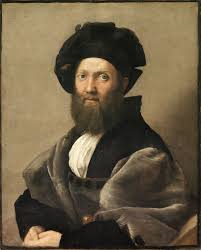
Shortly after arriving in the Lot in 2013 my wife and I visited Montal. It’s a 16th century castle built by the de Balzac family and now owned by the State. It was only after we had finished going round and were in the courtyard outside that we noticed the words in small print at the end of the visitor leaflet: “the treasures of the Louvre were stored here during WW2, including the Mona Lisa.” When I recounted this to our neighbour, Michel, as he was sitting on our balcony, he smiled and told me of the three paintings from the Louvre that had been stored in his wife Martine’s family maison bourgeoise next door – Raphael’s portrait of Baldassare Castiglione, Gainsborough’s Lady Alston and Da Vinci’s John the Baptist. My jaw dropped. It was only last month that I discovered that he was just telling me of the paintings he thought I would know about. In fact, Martine’s family had housed 1,392 paintings. And the equivalent maison bourgeoise in the next village of Bétaille had taken in 457
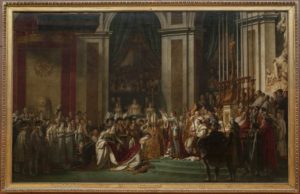
paintings. A two-door garage with flat above, which we have passed many times on entering Bétaille, stored the four 9-metre tubes containing The Wedding Feast at Cana, The Crowning of Napoleon and two other paintings of Napoleon. Michel told us of the huge efforts taken to keep these paintings from being damaged by the wide variation in temperature we get in this part of France – weeks of frost in winter, as high as 40° in summer. Someone had to be on guard all the time to ensure the paraffin heaters did not set the place alight in winter and the water being pumped over the roof and down the walls did not get inside the cylinders in summer.
We have long been puzzled why so little is made by local tourist offices of places and events which we are sure foreign visitors would be fascinated by. Not far from here is a chapel with stained glass windows by Chagall. Yet there is no indication of their existence either in the nearest tourist office nor in the village itself.
Back to Jaujard at the start of 1944. Huyghe tells how his boss predicted that the allies would land in February. March, April, May passed with no such relief. The pressure to transport the Louvre’s artworks back to Paris and on to Germany from Goering and the Vichy government was relentless. Then, on 6 June, as Huyghe puts it drily: “At last. The landings. The lines were cut. The Germans were fully occupied with other things.”

In fact by this stage Jaujard was making his predictions from hiding. He was living on a farm over a thousand metres up, on the side of Mont Lozère. He was later to tell his friend and Resistance leader, André Chamson, that this was the happiest time of his life, up “among the pure springs” and “with humble people who took me in and fed me”. Early in 1944 the Resistance contacted him, probably via Chamson, to ask what they could do to help protect the treasures of the Louvre, now nearly all stored in two chateaux, three mansions and one garage within 30 kms of each other along the upper Dordogne valley. Jaujard’s chief worry was that Allied bombers would destroy what he and his staff had spent years protecting from the Germans. The Resistance needed to tell the Allies which buildings to avoid bombing. He met one of their liaison officers who went by the nom-de-guerre of Mozart. In fact, she was the actress, Jeanne Boitel, then aged 40 and still stunning. The two were lovers within days.
Boitel succeded in stopping the Allies from bombing the Louvre’s treasures. But not without a final mishap on 14 July 1944. Van der Kemp had had white letters, six metres long, put out on the meadow in front of the château of Montal, spelling out “Musée de Louvre”. It was meant to warn Allied bombers not to bomb the building. But Huyghe reckoned it baffled them, perhaps not knowing what the three words meant. 96 American bombers flew up the valley that day and once over Montal they released three parachutes, one red, one white, one blue – the French flag. Each carried a cache of light weapons to the ground. The planes turned and flew back low, making an awful din. Loudspeakers screamed in English: “Runway not long enough”. And then they disappeared to the west. The local Resistance group did not get the huge supply of weapons they had been promised. “The containers of sub-machine guns did not join up with the crates of paintings,” as Huyghe put it.
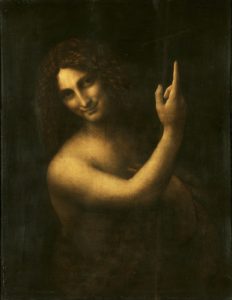
When Jaujard came out of hiding after the liberation of France he was initially accused of hiding German soldiers in the Louvre. This denunciation, so common at the end of the war and usually made by collaborators trying to save their skins, was easily dismissed as a lie. Jaujard was decorated and his successful efforts to save thousands of pieces of art was applauded. Every single one returned to the Louvre undamaged, a remarkable feat. He had a son by Boitel and once he got a divorce they married. He died in 1967. Yet reading the account of his post-war years and the eulogy given by his friend Chamson at his funeral, I get the sense that even while he was alive he never got the praise he was due. And now he is hardly remembered at all.
Whoever is put in charge of bringing the cathedral of Notre Dame back to its former glory will surely and rightly be showered with praise once it is finished. He or she will have a large entry in Wikipedia. Look up Jacques Jaujard’s current entry; it’s just one page in English and two in French. Why, oh why?

